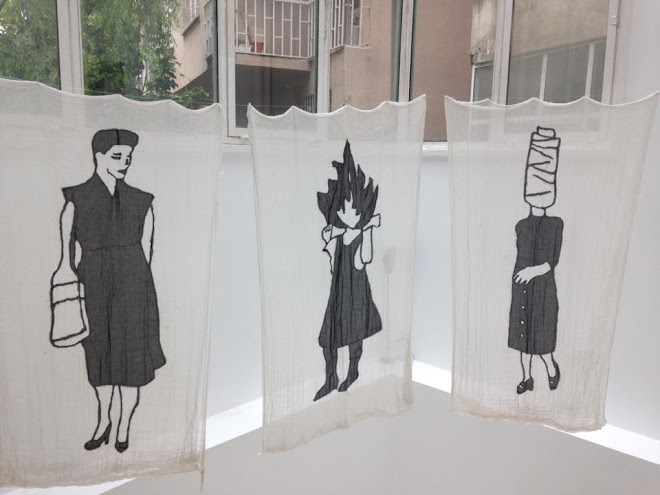Turkish artist Güneş Terkol challenges feminine imaginaries. She departs from personal or collective histories shared by women at workshops organized in the context of her creative process. For example, embroidering, a practice culturally attributed to domestic lives and women’s labor assumes distinctive public and political layers in her work. In analyzing her aesthetic approach a short text published at website of the Krank Art Gallery defines it in the following terms:
“Producing works about the relationships between gender identities through the use of sewing, video, drawings and sound, the artist believes that her work is a relationship involving waste, contradictions and relations. In her works, she pursues signs, stories, words and dreams that motivate her and that she finds harmonious enough to inspire new narratives out of them. When starting a new work, she studies the notes and drawings in her old notebooks and in the fabrics and photographs she collects. The artist’s work is shaped by the social conditions in which she lives, the images she encounters, her personal history and the materials she finds. The artist, looking for means of expression beyond the act of painting, uses pieces of fabric she collects to this end. Instead of heavy, unwieldy and expensive materials, she opts for use economical, casual, easy-to-carry elements and uses unfettering tools in her artistic practice”.
At the 32nd Bienal of São Paulo, Terkol presented the installations Couldn’t Believe What She Heard (2015) and The Girl Was Not There (2016). The first is composed of images in which elements related to the stereotype of the ‘feminine world’ – polished fingernails, hair, shoes – are contrasted, in an unstable assemblage, with fragments of bodies whose gender is undefined. In the second installation, Terkol reclaims the mystical and idyllic character of nature. She uses colors extracted from organic materials such as onions, tobacco leaves, avocados and beetroots to compose landscapes or interior scenes that blend ornamental elements, empty frames and invented figures. The fabric used by Terkol in these interventions emphasizes a sense of frailty and its transparency allows us to glimpse through the compositions, multiplying and deconstructing the imaginaries of the feminine and nature.
Terkol installations at the 32nd São Paulo Bienal

